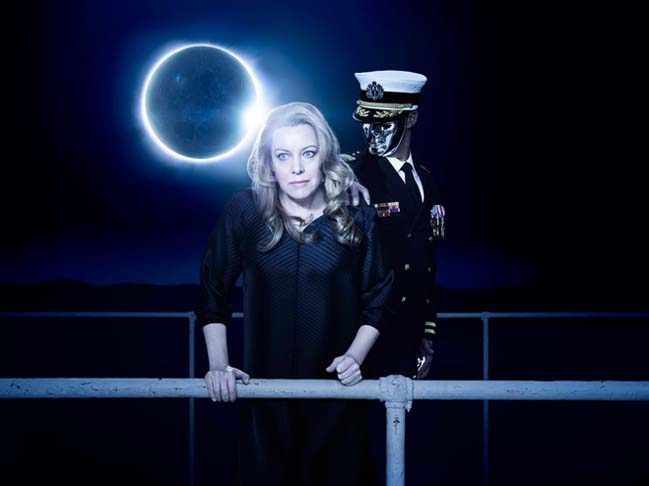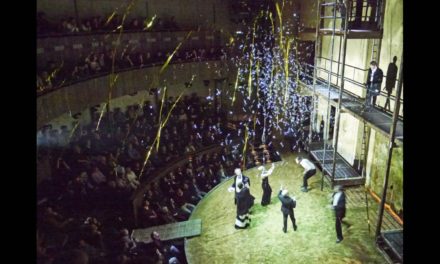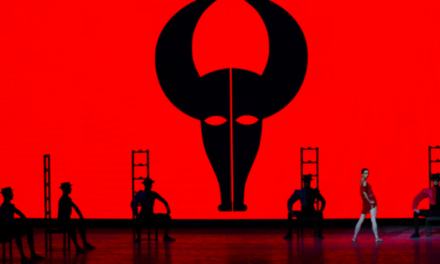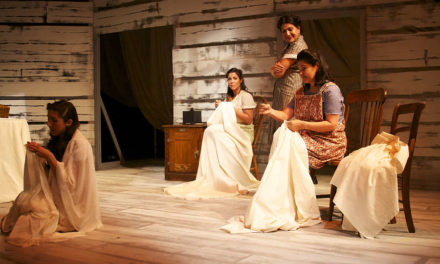Live – what is it and why does it matter? The Metropolitan Opera’s Live in HD series brings opera to over 2,000 screens.
The 10th anniversary season of Met Live in HD began on October 8, 2016. Fans of regular Met performances – who prefer the viewing experience of seeing opera at the movies – can see Met Live in HD in 72 countries around the world.

The auditorium of the Metropolitan Opera House in New York City.
Photo: Jonathan Tichler/Metropolitan Opera
Celebrating its 50th year at Lincoln Center, The Metropolitan Opera offers a season that includes Verdi, Mozart, and of course, Wagner. The in-person experience at the Met is exceptional. The entrance into the three-dimensional opera house brings a feeling of immediacy. Tall ceilings provide the opportunity for unparalleled set design, and the sound reverberates from every corner. The sheer number of people in the space is impressive.
At first, the screen to screen logic feels a bit distancing, when viewing the opera Live in HD. Seeing the vibrant reds and golds of the Met muted through the lens of the camera feels disappointing.
Attending the Tristan und Isolde Live in HD premiere at Brooklyn Academy of Music are more than 150 audience members. This Brooklyn, NY audience is full of artists and viewers who are Russian, Jewish, Italian, and African-American. Because the opera is at the movies, there is plenty of popcorn, soda, and conversations with friends. Perhaps raised with the tradition of Metropolitan Opera broadcasts on Saturdays, they are ready for the over four-hour experience.
Wagner’s sweeping score is complimented with stunning performances from Nina Stemme as Isolde and Stuart Skelton (Siegmund in the Met’s Ring cycle in 2013) as Tristan. Stellar supporting performances are from Ekaterina Gubanova (Brangäne) and Evgeny Nikitin (Kurwenal). The performance is conducted by Sir Simon Rattle and directed by Mariusz Treliński.
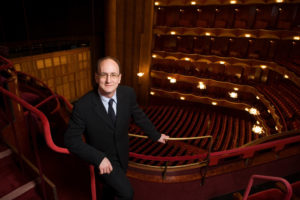
Peter Gelb, General Manager of The Metropolitan Opera, in the opera house auditorium.
Photo: Dario Acosta/Metropolitan Opera
The performance began with an interview with Met General Manager Peter Gelb, inviting Met aficionados to partake in this rare theatrical experience. Looking over the levels of the Met, Gelb freely invited spectators to Live in HD. Filled with two shots, moving cameras, and live interviews, the opera is exciting and deeply dramatic. After Performers run off stage and are greeted by stage hands and the host of Live in HD, Deborah Voight.
As the performers walk from hallway to hallway, the audience sees the excitement of live media, as it shifts. At this opera house, no one appears afraid of cameras. The cameras tower over the backstage and wings, freely capturing moments from the stage hands, performers, and opera management.
Meanwhile, in the control room, the images to choose from are abundant. Director of the HD production, Gary Halvorson, carefully manages the influx of information, and the range of images from which to choose. On a stage space that is so vast, close-ups make all the difference. What changes when all of this is magnified and seen up close? At first, the stage to screen transfer of the material can be daunting. If you’re a fervent attendee, who insists on the “theatrical experience” of opera, attending a movie to see an opera might be an almost unintelligible, alienating process.

Metropolitan Opera General Manager Peter Gelb monitors the Salome HD scratch taping in the control room.
Photo: Ken Howard/Metropolitan Opera
Photo taken on October 4, 2008 in New York City.
American theatergoers, in the tradition of spending two hours in the theater, enjoying light comedy, find themselves in a very different position, when enjoying the screen representation of Tristan und Isolde. Nothing is lost in the impact of a moment, as the opera goes Live in HD.
It is a long and intense experience. During Richard Wagner’s somber overture, waves pulsate across the screen showing the life blood of Isolde. When shown on the screen at BAM, it really creates the feeling of immediacy. Having all the grace and much of the potency, Nina Stemme’s first act is extraordinary. Stemme as Isolde spares no emotion, as she considers a black tube that she thought was poison and is actually a love potion. It’s a difficult dance for the anguished lovers. The scarred René Pape as King Marke is also impressive. His formidable presence – so different from his calm off-stage demeanor – is a perfect fit for the role.
The players deliver performances that reach into the depths of the psyche. In Act III, Tristan pines for Isolde. Having an extraordinary flesh wound, he journeys backward into the dark hole with circular light, designed by Projection Designer, Bartek Macias. To the circle, the players will return before the three acts are over.
The performers explain the moments and demystify the characters. It’s one the more pleasant aspects of Live in HD. Though watching the opera at the movies is a removed experience, it’s no longer exceptionally distancing. With friends and popcorn, seeing the opera Live in HD rivals sports.
Gone is any delusion or snobbery. The four-hour opera experience of seeing Tristan und Isolde proves to be not so much a test of endurance or a muted misrepresentation of “live.” With the height of emotion distilled and simple, clear explanations, it’s a pleasantly surprising viewing experience.
Up next is Mozart’s Don Giovanni. The Live In HD presentation shows on October 22.
This post was written by the author in their personal capacity.The opinions expressed in this article are the author’s own and do not reflect the view of The Theatre Times, their staff or collaborators.
This post was written by Marcina Zaccaria.
The views expressed here belong to the author and do not necessarily reflect our views and opinions.

